#natural history museum of denmark
Explore tagged Tumblr posts
Text

Today I had the great privilege of getting to pick up this beautiful specimen of the critically endangered Mecistops cataphractus from Denmark’s famous Krokodillezoo. It passed away on the night of the 19th of June, 2024, after a prolonged fight to keep it alive. The necropsy revealed a pathology that constricted the passage from the stomach into the small intestine so much that food couldn’t pass through, which explains its inability to keep food down, and ultimately its death.
It is always so sad to lose an animal like this, but by entering the Natural History Museum of Denmark, this individual will be able to serve the scientific community for *centuries* and generations to come.
#zoology#natural history#crocodile#animals#Herpetology#natural history museum of Denmark#Mecistops cataphractus#Mecistops#selfie#my face#that thing on the front of my skull#gpoyt
786 notes
·
View notes
Text

Pyrophyllite
Natural History Museum of Denmark, Mineral Hall
#pyrophyllite#geology#minerals#mineral hall#mineralology#american minerals#us minerals#america#california#californian minerals#natural history#natural history museum#museum#museums#danish museums#danish museum of natural history#danish natural history museum#natural history museum of denmark#copenhagen#denmark
158 notes
·
View notes
Text

The preserved hearts of the last known pair of great auks, part of the collection of the Natural History Museum of Denmark. The birds were nesting on the island of Eldey, off the coast of southwest Iceland, when they were killed on June 3rd, 1844. The single egg they'd been incubating at the time was crushed in the process. [ x ]
632 notes
·
View notes
Text
This week, scientists named seven newly described frog species. Scientists discover thousands of new species every year — but these have a special claim to fame: They pay homage to Star Trek. Mark Scherz is one of the authors on the paper about these amphibians and a curator of herpetology (that's reptiles and amphibians) at the Natural History Museum of Denmark. He says these frogs' calls sound so much like the "futuristic sounding whistles and beeps" of the Star Trek series that they named each of the seven after a captain.
Continue Reading.
323 notes
·
View notes
Text
Travel the World of Imagination: Journeys Beyond Border
Kieth Denmark M. Retes | BSIT1A OVERVIEW:
Switzerland originates from the Old Swiss Confederacy established in the Late Middle Ages, following a series of military successes against Austria and Burgundy; the Federal Charter of 1291 is considered the country's founding document. Swiss independence from the Holy Roman Empire was formally recognized in the Peace of Westphalia in 1648. Switzerland has maintained a policy of armed neutrality since the 16th century and has not fought an international war since 1815. It joined the United Nations only in 2002 but pursues an active foreign policy that includes frequent involvement in peace building.
Switzerland is the birthplace of the Red Cross and hosts the headquarters or offices of most major international institutions including the WTO, the WHO, the ILO, FIFA, the WEF, and the UN. It is a founding member of the European Free Trade Association (EFTA), but not part of the European Union (EU), the European Economic Area, or the eurozone; however, it participates in the European single market and the Schengen Area. Switzerland is a federal republic composed of 26 cantons, with federal authorities based in Bern. references: Switzerland - Wikipedia
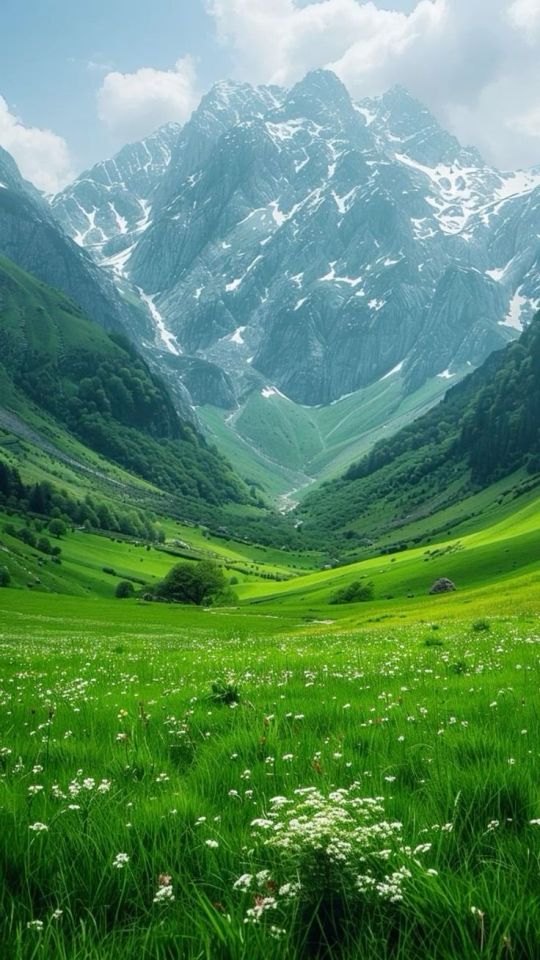
Switzerland, a small yet influential country nestled in the heart of Europe, stands out in many ways. From its awe-inspiring landscapes to its unique political system, Switzerland offers a blend of natural beauty, cultural diversity, and global diplomacy that few other nations can match. Its distinct character is a product of centuries of neutrality, innovation, and a deep respect for its heritage, all of which contribute to the nation’s unparalleled reputation on the world stage.
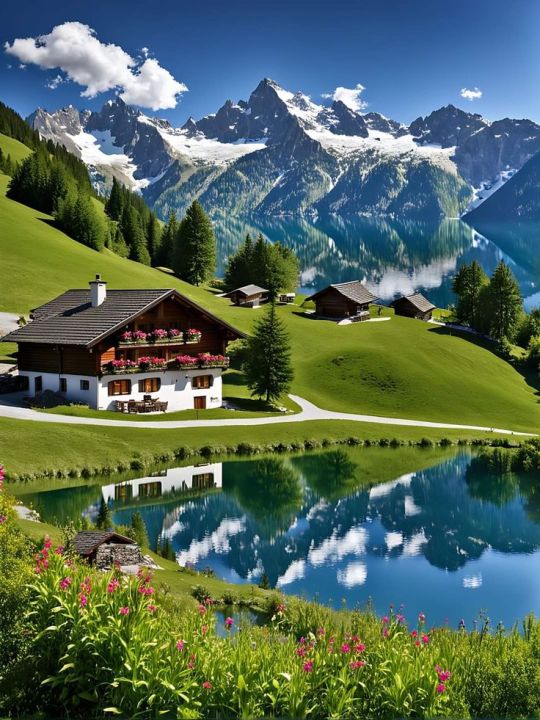
One of the first things that captivates visitors to Switzerland is its breathtaking scenery. The country is dominated by the majestic Alps, with towering snow-capped peaks that attract adventurers and nature lovers from around the globe. Whether it’s skiing in world-class resorts like Zermatt and St. Moritz or hiking through verdant valleys and along crystal-clear lakes, Switzerland offers outdoor experiences that are hard to rival. Beyond the Alps, the country is dotted with picturesque towns, lush meadows, and sparkling lakes, such as Lake Geneva and Lake Lucerne, each offering their own unique charm. The country's commitment to environmental preservation further enhances the beauty of these landscapes, ensuring that they remain pristine for future generations.
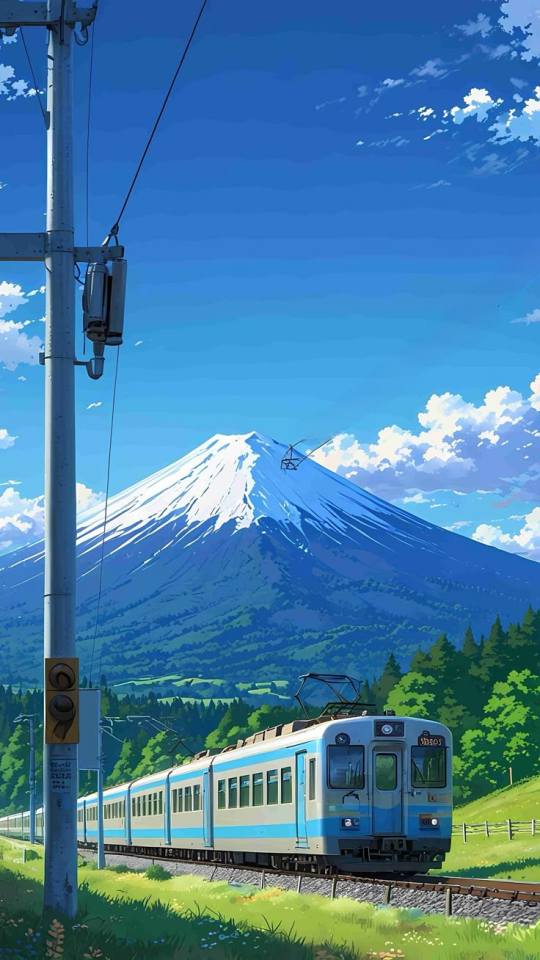
Swiss culture is characterized by diversity, which is reflected in diverse traditional customs. A region may be in some ways culturally connected to the neighbouring country that shares its language, all rooted in western European culture. The linguistically isolated Romansh culture in Graubünden in eastern Switzerland constitutes an exception. It survives only in the upper valleys of the Rhine and the Inn and strives to maintain its rare linguistic tradition.
Switzerland is home to notable contributors to literature, art, architecture, music and sciences. In addition, the country attracted creatives during times of unrest or war. Some 1000 museums are found in the country.
Among the most important cultural performances held annually are the Paléo Festival, Lucerne Festival, the Montreux Jazz Festival, the Locarno International Film Festival and Art Basel.
Alpine symbolism played an essential role in shaping Swiss history and the Swiss national identity. Many alpine areas and ski resorts attract visitors for winter sports as well as hiking and mountain biking in summer. The quieter seasons are spring and autumn. A traditional pastoral culture predominates in many areas, and small farms are omnipresent in rural areas. Folk art is nurtured in organisations across the country. Switzerland most directly in appears in music, dance, poetry, wood carving, and embroidery. The alphorn, a trumpet-like musical instrument made of wood has joined yodeling and the accordion as epitomes of traditional Swiss music.
references: Switzerland - Wikipedia
64 notes
·
View notes
Text

Peder Severin Krøyer (1851-1909) "Portrait of Otto Diderich Ottesen" (1873) Oil on canvas Located in the Museum of Natural History, Hillerød, Denmark Otto Diderich Ottesen was a Danish artist known for his still life paintings of flowers.
#paintings#art#artwork#genre painting#male portrait#peder severin krøyer#peder severin kroyer#oil on canvas#fine art#museum#art gallery#danish artist#portrait of a man#flowers#history#clothing#clothes#beard#hat#portrait of the artist#1870s#late 1800s#late 19th century#a queue work art
99 notes
·
View notes
Text
Indigenous people welcome return of 16th-17th century cloak to Brazil
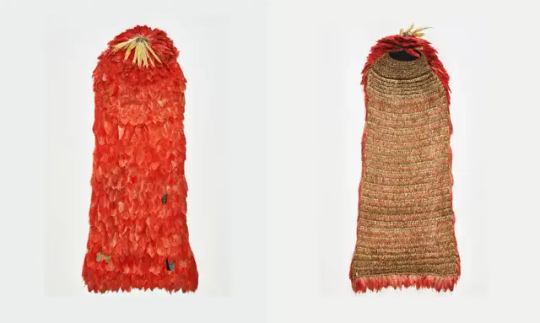
The return of a Tupinambá cloak made from red guará bird feathers to Brazil, after more than three centuries in storage in Denmark, was a reason for celebration among the indigenous people in southern Bahia. The Danish National Museum donated the artifact to the National Museum in Rio de Janeiro.
The Brazilian museum confirmed the cloak's arrival on July 11 and announced plans to exhibit the piece in the coming weeks.
However, ten other similar cloaks, also made from guará feathers, remain in European museums, according to a survey by American researcher Amy Buono from Chapman University in California, USA.
According to the research, there are four more cloaks in the National Museum of Denmark, in addition to the one that was returned to Brazil. The Natural History Museum of the University of Florence, Italy, holds two others. Additionally, Tupinambá cloaks can be found in the Museum of Cultures in Basel, Switzerland; the Royal Museum of Art and History in Brussels, Belgium; the Quai Branly Museum in Paris, France; and the Ambrosian Library in Milan, Italy.
Continue reading.
#brazil#brazilian politics#politics#indigenous rights#denmark#museums#image description in alt#mod nise da silveira
47 notes
·
View notes
Text
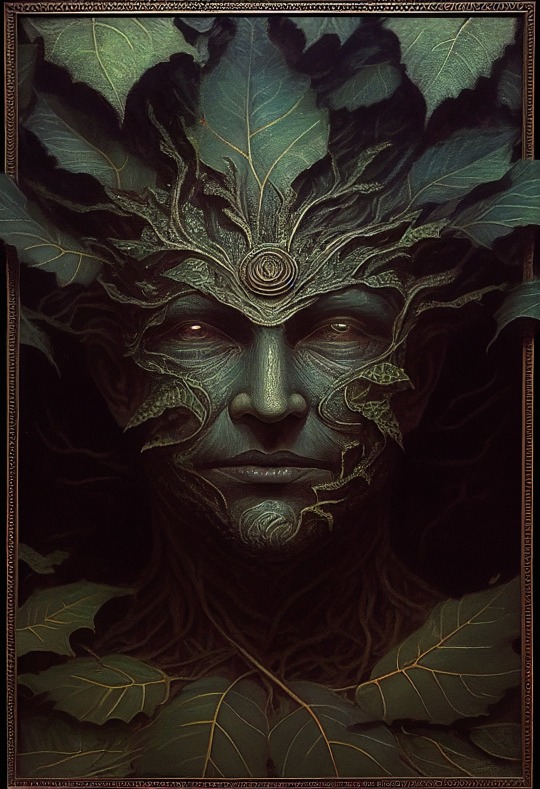
The Enigma of the Green Man
Symbol of life and nature: The Celtic nature god Cernunnos from the Gundestrup Cauldron (1st Century BCE, now in the National Museum of Denmark in Copenhagen)
The Celtic nature god Cernunnos from the Gundestrup Cauldron (1st Century BCE, now in the National Museum of Denmark in Copenhagen)
The most common and perhaps obvious interpretation of the Green Man is that of a pagan nature spirit, a symbol of man’s reliance on and union with nature, a symbol of the underlying life-force, and of the renewed cycle of growth each spring. In this respect, it seems likely that he has evolved from older nature deities such as the Celtic Cernunnos and the Greek Pan and Dionysus.
Some have gone so far as to make the argument that the Green Man represents a male counterpart - or son or lover or guardian - to Gaia (or the Earth Mother, or Great Goddess), a figure which has appeared throughout history in almost all cultures. In the 16th Century Cathedral at St-Bertrand de Comminges in southern France, there is even an example of a representation of a winged Earth Mother apparently giving birth to a smiling Green Man.
Because by far the most common occurrences of the Green Man are stone and wood carvings in churches, chapels, abbeys and cathedrals in Europe (particularly in Britain and France), some have seen this as evidence of the vitality of pre-Christian traditions surviving alongside, and even within, the dominant Christian mainstream. Much has been made of the boldness with which the Green Man was exhibited in early Christian churches, often appearing over main doorways, and surprisingly often in close proximity to representations of the Christ figure.
Incorporating a Green Man into the design of a medieval church or cathedral may therefore be seen as a kind of small act of faith on the part of the carver that life and fresh crops will return to the soil each spring and that the harvest will be plentiful. Pre-Christian pagan traditions and superstitions, particularly those related to nature and trees, were still a significant influence in early medieval times, as exemplified by the planting of yew trees (a prominent pagan symbol) in churchyards, and the maintenance of ancient “sacred groves” of trees.
Tree worship goes back into the prehistory of many of the cultures that directly influenced the people of Western Europe, not least the Greco-Roman and the Celtic, which is no great surprise when one considers that much of the continent of Europe was covered with vast forests in antiquity. It is perhaps also understandable that there are concentrations of Green Men in the churches of regions where there were large stretches of relict forests in ancient times, such as in Devon and Somerset, Yorkshire and the Midlands in England. The human-like attributes of trees (trunk-body, branches-arms, twigs-fingers, sap-blood), as well as their strength, beauty and longevity, make them an obvious subject for ancient worship. The Green Man can be seen as a continuing symbol of such beliefs, in much the same way as the later May Day pageants of the Early Modern period, many of which were led by the related figure of Jack-in-the-Green.
Symbol of fertility: Although the Green Man is most often associated with spring, May Day, etc, there are also several examples which exhibit a more autumnal cast to the figure. For example, some Green Men prominently incorporate pairs of acorns into their designs (there is a good example in King's College Chapel, Cambridge), a motif which clearly has no springtime associations. In the same way, hawthorn leaves frequently appear on English Green Men (such as the famous one at Sutton Benger), and they are often accompanied by autumn berries rather than spring flowers. The Green Man in the Chapelle de Bauffremont in Dijon (one of the few to retain its original paint coloration) shows quite clearly its leaves in their autumn colours.
This may have been simple artistic license. However, acorns, partly due to their shape, were also a common medieval fertility symbol, and hawthorn is another tree which was explicitly associated with sexuality, all of which perhaps suggests a stronger link with fertility, as well as with harvest-time.
Symbol of death and rebirth: Green Man in the form of a skull on a gravestone in Shebbear, Devon, England (photo Simon Garbutt)
Green Man in the form of a skull on a gravestone in Shebbear, Devon, England
The disgorging Green Man, sprouting vegetation from his orifices, may also be seen as a memento mori, or a reminder of the death that await all men, as well as a Pagan representation of resurrection and rebirth, as new life naturally springs out of our human remains. The Greek and Roman god Dionysus/Bacchus, often suggested as an early precursor of the Green Man, was also associated with death and rebirth in his parallel guise as Okeanus.
Several of the ancient Celtic demigods, Bran the Blessed being one of the best known, become prophetic oracles once their heads had been cut off (another variant on the theme of death and resurrection) and, although these figures were not traditionally represented as decorated with leaves, there may be a link between them and the later stand-alone Green Man heads.
There are several examples of self-consciously skull-like Green Men, with vegetation sprouting from eye-sockets, although these are more likely to be found on tombstones than as decoration in churches (good examples can be seen at Shebbear and Black Torrington in Devon, England). Such images might be interpreted as either representing rebirth and resurrection (in that the new life is growing out of death), or they might represent death and corruption (with the leaves growing parasitically through the decaying body).
The Green Man by Talon Abraxas
43 notes
·
View notes
Text


Dodo coloring drawing for Natural History Museum of Denmark's children's workshop for the exhibition Wild Wonderful World!
This one depicts the amazing recreation of a dodo on display in the exhibition, created with reference from the dodo skull in the museum collection.
Also a jar of bones :)
26 notes
·
View notes
Text
Greetings, fellow travelers! 🌎
On this blog you will find wild stories, stunning photos, quotes, random gossip, whimsy & snark, from staff and visitors to:
Museums 🏛️
Science centers 🔭
Zoos 🐼
Aquariums 🦈
Botanical gardens 🌿
& related institutions.
I have some stories of my own to tell, and I want to hear about your experiences in these places, too!
About me: I just took early retirement after working for more than 25 years as the web designer, editor, and photographer for a natural history museum. I have a BA in anthropology and a master's in museum studies. I had graduate assistantships in the exhibits, entomology, and geology/paleontology departments of the university museum where I was working towards my degree. Before that, I worked as a sort of general assistant in a small science museum. Earlier still, I volunteered with the exhibits team at a science & nature center that also had a small zoo.
My parents were both scientists - mom was a high school biology teacher (and a botanist by training) and dad was a physicist. They both loved to travel, and we did a lot of that when I was a kid. We took a few cross-country road trips, and also took trips to Canada, France, the UK and Switzerland. I've done limited travel on my own to Germany and Denmark. I've been to museums and similar places on most of these trips. I plan to share my thoughts on those experiences here.
Please join me in exploring the world of museums!
#first post#museums#research#museology#science#science center#science museum#history#history museum#living history#art museum#museum studies#Children's museum#aquariums#botanical gardens#herbarium#nature center#zoos#Wildlife center#conservation#Informal education#Exhibits#Museum trips#travel#places to visit#cultural attractions#Museum history#museum humor#travel destinations
10 notes
·
View notes
Text
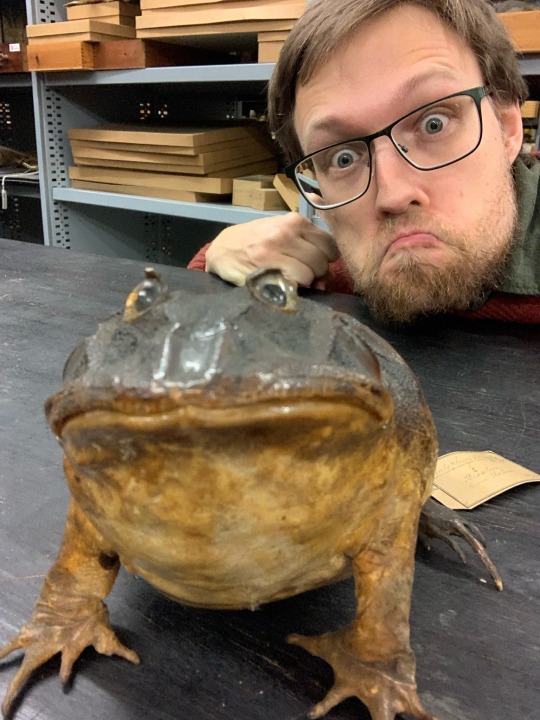
Those stuffed Ceratophrys blues
#this specimen is 182 years old#from Christmas Day in 1842#and we just found out that it isn’t registered in our collection#which I can only attribute to it being so incredibly iconic#like who needs a number to remember this thing??#Ceratophrys#Ceratophrys aurita#Natural History Museum of Denmark#NHMD#my face#that thing on the front of my skull#selfie
849 notes
·
View notes
Text
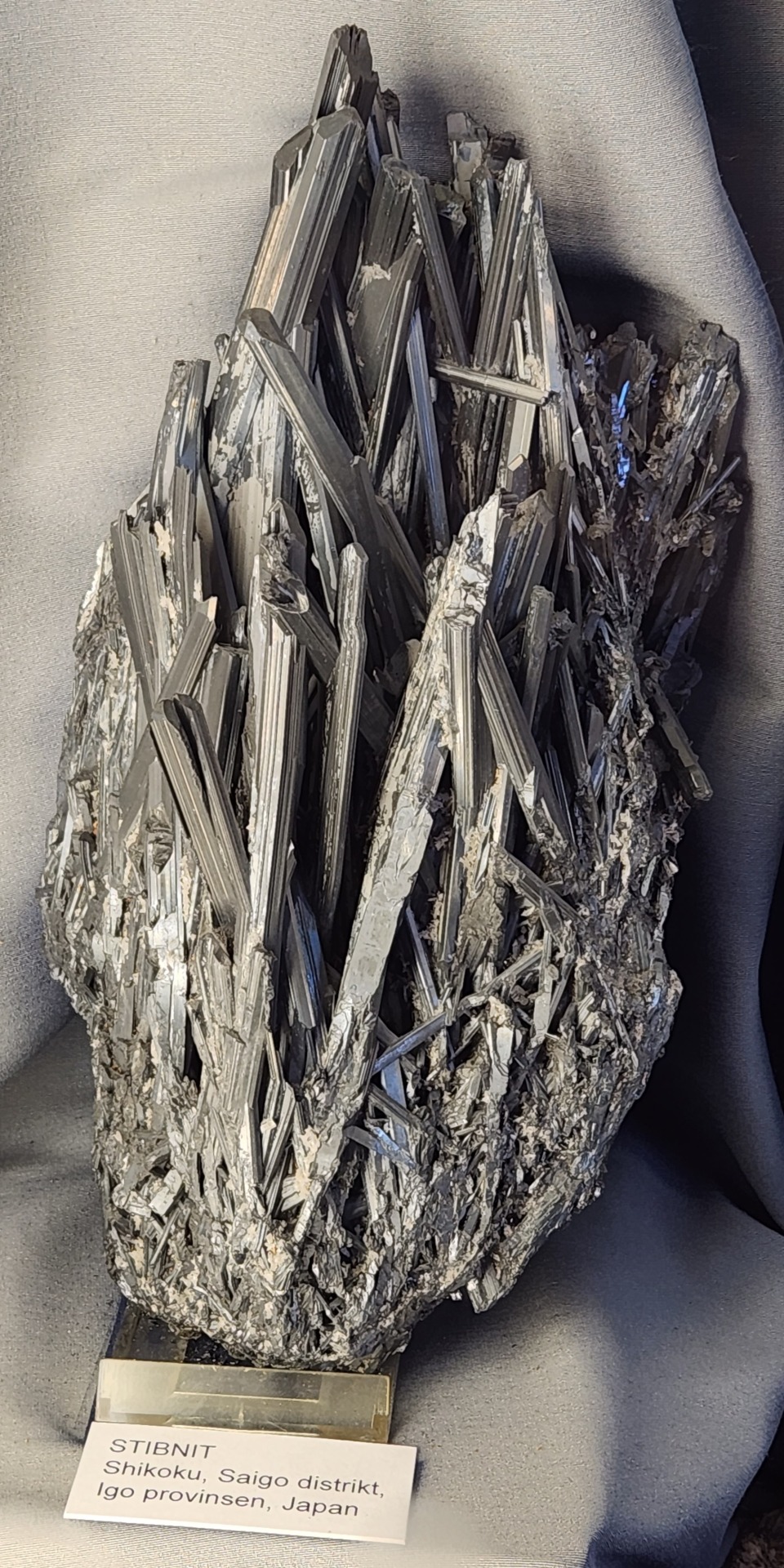
Stibnite
Natural History Museum of Denmark, Mineral Hall
#minerals#geology#stibnite#denmark#museum#museums#danish museums#natural history#natural history museum#natural history museum of denmark#danish natural history museum#japan#japanese minerals#mineral hall
148 notes
·
View notes
Text














A taste of Copenhagen's art and culture scene featuring (among others) Rodin, Picasso, Monet, and Matisse:
* Ny Carlsberg Glyptotek
* SMK - National Gallery of Denmark
* Rosenborg Castle
* Natural History Museum
#photoblog#photoblr#history#historylovers#art#artwork#painting#scultpure#pablo picasso#auguste rodin#claude monet#henri matisse#copenhagen#museum#impressionism#art museum
18 notes
·
View notes
Text
Six new beetle species have been discovered in South America by researchers at the University of Copenhagen. Among them is one with a distinctively shaped sexual organ that has led the researchers to name it after global beer powerhouse Carlsberg. According to the researchers, more attention urgently needs to be paid to our planet's millions of unknown species before it's too late. Penises are more prevalent in some lines of work than others. And for researchers who study biodiversity of insects, penises play a significant role in their daily workload—for good reason. "Genitalia are the organs in insects that evolve to be different in every species. As such, they are often the best way to identify a species. That's why entomologists like us are always quick to examine insect genitalia when describing a species. The unique shape of each species' genitals ensures that it can only reproduce with the same species," explains biologist Aslak Kappel Hansen of the Natural History Museum of Denmark, whose work entails describing insect species. By studying beetle specimens that have been hidden in the Natural History Museum of Denmark and other insect collections of the world for decades, Aslak and colleagues José L. Reyes-Hernández, Josh Jenkins Shaw and Alexey Solodovnikov have discovered six new species of the rove beetle genus Loncovilius.
Continue Reading.
183 notes
·
View notes
Text






The Louisiana Museum of Modern Art, Humlebæk (Denmark), 01.03.24
Part 2/4 of the revival trip with some glimpses of what's inside of The Louisiana Museum. It was difficult to choose which pictures to post, everything is worth posting. In order :
One of the paintings from the Firelei Báez—Trust Memory over History exhibition. A vibrant and colorful artwork about colonial occupation and our contemporary societies.
Another painting from Firelei Báez—Trust Memory over History.
Spider couple by Louise Bourgeois in this breathtaking room with a large window overlooking on nature . Louise Bourgeois was a French-American sculptor, known among other things for her impressive sculptures of spiders, symbols of her mother and motherhood. Her work is inspired by her childhood and its traumas, especially "her love for her mother and her anger at her father", quotes the museum.
Same sculpture at another angle. This room of the museum is probably the most popular on social medias.
One of the minimalist hallway of the museum. So peaceful thanks to the large windows making you feel like you are part of the landscape.
Another perfect place but outside of the museum, if I'm not mistaken. I don't know the name of it, but I stayed there a long time, enjoying the moment in this light room.
That are some highlights but there are so much more to see. The museum is known for welcoming an important collection of Giacometti.
#louisiana museum of modern art#denmark#copenhagen#art#scandinavia#nature#travel#photograpy#personal#personnel#solotravel#infp#Humlebæk#japanesestyle#louise bourgeois#alberto giacometti#firelei baez#chaim soutine#sculpture#scandinavianstyle#canong7x#canonphotography#canon
8 notes
·
View notes
Text
Mastering European Travel: A Complete Planning Guide
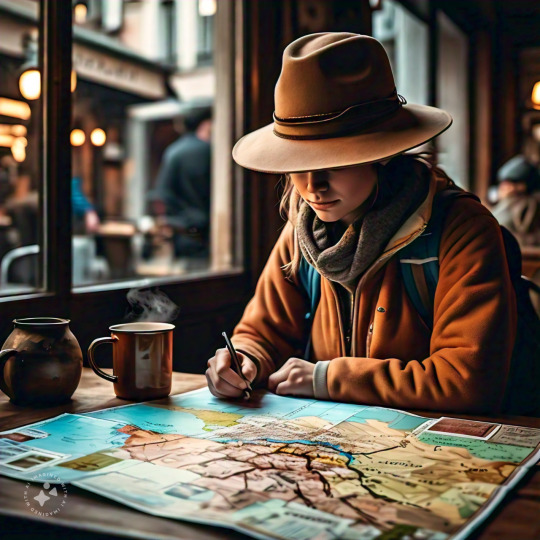
Europe is a dream destination for many travelers, offering a rich blend of history, diverse cultures, stunning landscapes, and culinary delights. Whether you’re planning to explore the romantic streets of Paris, wander through the ancient ruins of Rome, or hike the rugged Scottish Highlands, there’s something for everyone on this continent. However, to make the most of your European adventure, planning is key. In this comprehensive guide, we'll walk you through everything you need to know to master European travel, from budgeting and transportation to must-visit destinations and cultural tips.
1. Choosing Your European Destinations
Europe is vast, with over 40 countries to explore, each offering a unique experience. Depending on the length of your trip and your interests, you may want to focus on specific regions or cities.
Popular Regions to Consider:
Western Europe: France, Germany, Spain, the UK, Belgium, and the Netherlands.
Southern Europe: Italy, Greece, Portugal, and Croatia.
Eastern Europe: Hungary, Poland, Czech Republic, and Romania.
Northern Europe: Scandinavia (Denmark, Sweden, Norway), and Finland.
Central Europe: Austria, Switzerland, and Slovakia.
Key Considerations for Choosing Destinations:
Your Interests: Do you love art, architecture, history, nature, or food? Different cities and regions specialize in different experiences. Paris is perfect for art lovers, while history buffs may prefer Athens or Rome.
Budget: Northern and Western Europe tend to be more expensive, while Eastern and Southern Europe can offer more budget-friendly options.
Travel Seasons: Consider the time of year. Summer is popular but crowded, while winter can offer cheaper rates and a more authentic local experience (though weather may be an issue in some regions).
2. Setting a Travel Budget
Travel in Europe can range from affordable to luxurious depending on your choices for accommodation, dining, and activities. Here’s a breakdown of what you should consider while budgeting:
Accommodation
Hostels: Ideal for solo travelers or those on a budget. Many hostels in Europe are clean, safe, and offer private rooms as well.
Airbnb & Vacation Rentals: A great option for couples or families wanting more space and kitchen facilities.
Hotels: Mid-range hotels offer comfort without breaking the bank, while luxury travelers can indulge in Europe’s many five-star hotels.
Budget Tip: Look into staying in less-touristy areas or smaller towns outside major cities, where accommodation tends to be cheaper.
Transportation
Flights: Europe is connected by an extensive network of budget airlines (like Ryanair, EasyJet), but be mindful of extra baggage fees and airport locations, which can be far from city centers.
Trains: The European rail system is world-class, especially for intercity and regional travel. Consider a Eurail pass if you plan to visit multiple countries by train.
Buses: Companies like FlixBus offer affordable and extensive bus routes throughout Europe, a great option for budget travelers.
Car Rentals: If you plan to explore rural areas or smaller towns, renting a car might be the best option. However, parking in cities can be expensive and difficult.
Dining & Food
Street Food & Markets: Many European cities have excellent street food and local markets where you can sample delicious, authentic dishes at a fraction of the cost of dining in restaurants.
Cafés & Casual Dining: Lunch specials or “prix fixe” menus often provide good value for money.
Fine Dining: If you’re a foodie, Europe boasts some of the world’s best Michelin-star restaurants, but these will increase your food budget.
Activities & Sightseeing
Free Attractions: Many European cities have free attractions, such as parks, historical landmarks, and even museums on certain days of the week.
City Passes: Consider purchasing city passes (e.g., Paris Pass, Rome Card) that provide free or discounted entry to top attractions, as well as free public transportation.
Tours: Guided tours can be a great way to learn about a destination, but opt for group tours if you’re looking to save money.
3. Planning Your Transportation Around Europe
Getting around Europe is relatively easy thanks to its well-developed infrastructure. Here’s a breakdown of the main options:
Flights
Budget Airlines: Low-cost carriers such as Ryanair, Wizz Air, and EasyJet make it easy to hop between major European cities. Keep an eye out for flash sales and be mindful of hidden fees, such as those for checked luggage.
Major Airlines: For longer flights or transatlantic travel, consider full-service airlines like British Airways, Lufthansa, or Air France, which often offer more comfortable experiences.
Trains
Europe’s train system is one of the best in the world, making it easy to travel between countries and cities. Countries like Switzerland, France, and Germany have high-speed trains, while others, like Italy and Spain, also offer scenic routes.
Eurail Pass: If you’re planning to visit multiple countries, consider purchasing a Eurail pass, which offers unlimited train travel within a set period (e.g., 7 days, 1 month). This can be a cost-effective way to explore Europe, especially if you're covering long distances.
Buses
FlixBus & Eurolines: For budget travelers, buses are an affordable way to get around. They’re slower than trains but can be a great option for night travel, saving you both time and the cost of accommodation for a night.
Car Rentals
If you plan to explore remote or rural areas, renting a car can offer flexibility. However, it’s important to familiarize yourself with the local driving rules and road signs in each country, as they can vary significantly.
Public Transportation
Most European cities have excellent public transport systems, including buses, trams, and metros. You can buy day passes or city cards that offer unlimited travel for a set period. In cities like Paris, London, and Berlin, public transport is often faster and more convenient than driving.
4. Travel Tips for a Smooth European Experience
Understanding Schengen Zone Rules
Most of Europe is part of the Schengen Zone, which allows for visa-free travel between member countries for up to 90 days within a 180-day period. If you're visiting non-Schengen countries (e.g., the UK, Ireland, Romania), you'll need to check specific entry requirements. Make sure your passport is valid for at least six months after your return date.
Learning Basic Phrases
While English is widely spoken in many European countries, especially in tourist areas, learning a few basic phrases in the local language (hello, please, thank you) can go a long way in enhancing your experience and showing respect for the local culture.
Currency & Payments
Currency: The Euro is used by 19 of the 27 EU member countries, while others like the UK, Switzerland, and Scandinavian countries have their own currencies.
ATMs & Cards: Credit and debit cards are widely accepted, but it’s always a good idea to carry some cash, especially in smaller towns or rural areas where card payments may not be accepted.
Packing Tips
Pack Light: Europe’s cobblestone streets, narrow alleyways, and public transport systems can make it difficult to manage heavy luggage. Stick to a carry-on if possible.
Adapters: Europe uses different electrical outlets than the US or UK, so make sure to pack a universal adapter.
Safety & Travel Insurance
Europe is generally a very safe destination for travelers. However, it’s always a good idea to stay aware of your surroundings, especially in crowded areas where pickpocketing can be common.
Travel Insurance: Make sure to get travel insurance that covers medical emergencies, trip cancellations, and lost luggage.
5. Must-See European Cities and Experiences
While every traveler’s preferences will differ, here are some can’t-miss cities and experiences:
Paris, France
Highlights: The Eiffel Tower, Louvre Museum, Notre-Dame Cathedral, and charming neighborhoods like Montmartre.
Tip: Visit in the early morning or late evening to avoid crowds at popular sites like the Eiffel Tower.
Rome, Italy
Highlights: The Colosseum, Vatican City, Roman Forum, and the delicious Italian cuisine.
Tip: Book your Vatican tickets in advance to skip the long lines.
Prague, Czech Republic
Highlights: The Charles Bridge, Prague Castle, Old Town Square, and the famous Astronomical Clock.
Tip: Visit during the shoulder season (spring or fall) to enjoy fewer crowds and milder weather.
Barcelona, Spain
Highlights: The architectural wonders of Antoni Gaudí, including the Sagrada Família and Park Güell, and the lively Las Ramblas.
Tip: Try to catch a local flamenco performance for a taste of Spanish culture.
Amsterdam, Netherlands
Highlights: The Anne Frank House, Van Gogh Museum, and a boat ride through the iconic canals.
Tip: Rent a bike to explore the city like a local.
Edinburgh, Scotland
Highlights: Edinburgh Castle, Arthur's Seat, and the historic Royal Mile.
Tip: Visit during the Edinburgh Festival Fringe in August for a world-class arts festival.
Conclusion
Mastering European travel requires a mix of careful planning and the willingness to embrace spontaneous adventures. By setting a clear budget, choosing the right transportation, and familiarizing yourself with the regions and cultures of Europe, you’ll be well on your way to a memorable and stress-free journey. Europe’s rich history, vibrant cities, and breathtaking landscapes offer endless opportunities for exploration.
#TravelEurope#ExploreEurope#Wanderlust#EuroTrip#BackpackingEurope#TravelGoals#EuropeVacation#BucketListTravel#ExploreTheWorld
2 notes
·
View notes